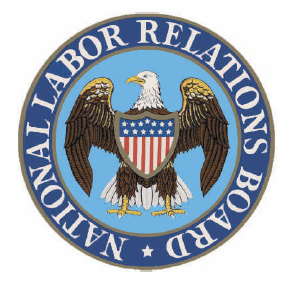There is a nationwide struggle between the gig companies and labor advocates over drivers’ statuses and rights, and it will likely lead to increased enforcement, litigation, and legislative changes. The Biden administration, which promised to be strong advocate for unions, is following through on that pledge as the National Labor Relations Board (NLRB) seems poised to overturn the current worker classification test (established in the 2019 SuperShuttle case) that made it more difficult to categorize workers as employees—a test that led the NLRB to conclude that Uber drivers are not employees because the TNC model “affords drivers significant entrepreneurial opportunity” (2019). In 2021, the NLRB signaled that it was open to reconsidering its previous decision, and in December of last year, the agency invited interested parties to weigh in on the issue. More importantly, a change could allow Uber drivers to move forward with their long-sought plans to unionize.
 The NLRB is also joining forces with the Wage and Hour Division (WHD), an agency of the US Department of Labor, to share information, collaborate, and coordinate on investigations of potential violations of federal labor and employment laws, placing particular emphasis on worker misclassification.
The NLRB is also joining forces with the Wage and Hour Division (WHD), an agency of the US Department of Labor, to share information, collaborate, and coordinate on investigations of potential violations of federal labor and employment laws, placing particular emphasis on worker misclassification.
Background on the Classification Standard
The December 2021 invitation for a public briefing stems from a case regarding The Atlanta Opera and involves makeup artists and hair stylists who are trying to unionize—but implications of this decision will reach into every industry. The board sought insight on whether they should adhere to the independent contract (IC) standard from the 2019 SuperShuttle case; return to the previous standard established by FedEx Home Delivery (2014), either in its entirety or with modifications; or do something else. In general, pro-employer groups favor the SuperShuttle decision, while unions and workers’ rights organizations tend to favor the pro-employee FedEx standard.
 SuperShuttle is a Trump-era NLRB decision that refocused the determination of worker status on “entrepreneurial opportunity” rather than the “economic realities” standard that had been established with the FedEx case. This decision affirmed the importance of entrepreneurial opportunity as a significant factor in evaluating IC status, and returned to the traditional common-law agency test, which involves looking at a non-exhaustive list of factors to determine whether an employment relationship exists. The traditional test weighs the extent of control that the employer may exercise over the details of the work, and whether the worker is engaged in a distinct occupation or business.
SuperShuttle is a Trump-era NLRB decision that refocused the determination of worker status on “entrepreneurial opportunity” rather than the “economic realities” standard that had been established with the FedEx case. This decision affirmed the importance of entrepreneurial opportunity as a significant factor in evaluating IC status, and returned to the traditional common-law agency test, which involves looking at a non-exhaustive list of factors to determine whether an employment relationship exists. The traditional test weighs the extent of control that the employer may exercise over the details of the work, and whether the worker is engaged in a distinct occupation or business.
The SuperShuttle standard gives more room to include potential entrepreneurial opportunity in the analysis of whether the worker is engaged in a distinct occupation or business, rather than being limited to the actual economic gains. Under this standard—where the overall evaluation shows significant opportunity for economic gain (or significant risk for loss)—the NLRB is likely to deem the worker an IC. In 2019, the NLRB Division of Advice applied the SuperShuttle test and concluded that Uber drivers are ICs because they had significant opportunities for “economic gain and, ultimately, entrepreneurial independence.”
In contrast, the FedEx case is an Obama-era NLRB decision that had the same common-law agency factors, but redefined the significance of an IC’s “entrepreneurial opportunity for gain or loss,” declaring that the worker’s entrepreneurial opportunity should not be the driving principle of the overall analysis. This standard shifted to the “economic realities” of the parties’ relationship: only actual (not theoretical) entrepreneurial opportunity should be considered. Under its “economic realities” analysis, it became much easier for workers to be categorized as employees, and more workers became subject to National Labor Relations Act (NLRA) protections (union organizing, unfair labor practices, etc.).
The NLRB will now reconsider whether to overturn SuperShuttle and adopt a different legal test for determining employment status under the NLRA. Replacing SuperShuttle with a more restrictive IC test would theoretically make it easier for independent operators, drivers, and delivery workers—including gig workers—to be deemed employees of black car bases, rideshare companies, and the like, and consequently allow them to unionize and engage in collective bargaining under the NLRA.
NLRB-DOL Coordination of Enforcement & Investigations
This past January, DOL and NLRB announced a memorandum of understanding (MOU) between the agencies to strengthen their partnership through enhanced information-sharing, joint investigations, and enforcement activity, as well as training, education, and community outreach, which may include the following:
- A formal process for NLRB and DOL to refer workers between the agencies, including advising workers of potential violations of laws enforced by the other agency, and information about at the other agency, including contact information
- A system to exchange information and data that supports each agency’s enforcement mandates, including complaint referrals and other sharing of information in complaint or investigative files relating to alleged violations of the laws
- Coordinated investigations and enforcement when matters fall within the agencies’ jurisdictions
- Increased scrutiny of companies with “complex or fissured employment structures, including joint employer, alter ego, and business models designed to evade legal accountability, such as the misclassification of employees.”
The IRS Involvement
In 2011, DOL and the IRS entered into its MOU as part of a joint initiative to reduce the incidence of employee misclassification. From a tax perspective, employers who misclassify workers avoid paying payroll taxes, which are used to fund programs such as Medicare and Social Security. Under the MOU, the agencies agreed to share information and other materials and to coordinate national outreach activities, similar to the NLRB-DOL MOU. For its part, the DOL agreed to “refer to the IRS... WHD investigation information and other data that DOL believes may raise Internal Revenue employment tax compliance issues related to misclassification” and share “WHD training materials and opportunities with the IRS.” In turn, the IRS agreed to “evaluate and classify employment tax referrals provided by the DOL and ... conduct examinations to determine compliance with employment tax laws.” In 2018, a US Treasury Inspector General report criticized the IRS for not effectively implementing the 2011 misclassification MOU.
How to Prepare
The NLRB’s decision will only impact the worker classification test used for labor relations issues under the NLRA—union organizing, unfair labor practices, and the like. It will have no direct bearing on the tests used by the states and other areas of the federal government to determine wage and hour compliance, unemployment compensation, workers’ compensation, or other labor and employment laws outside the NLRA. There are a variety of different legal standards that will apply to those situations. It will be important for businesses that use ICs to coordinate with legal counsel to develop a workforce strategy that works best among this patchwork of obligations. The coming months will be of great interest to businesses that use gig workers as we can likely expect to see the NLRB craft a new test for worker classification, and the DOL to create policies to implement the recommendations in the White House Taskforce Report. We may also see more states embrace laws like California’s Prop 22 (we’ll talk more about next issue) that attempt to strike the balance between preserving the flexibility that drivers value so much, while adding worker protections. [CD0522]
Matt Daus is a partner with the law firm Windels Marx, president of IATR, and a leading authority on ridesharing apps. He can be reached at mdaus@windelsmarx.com.

